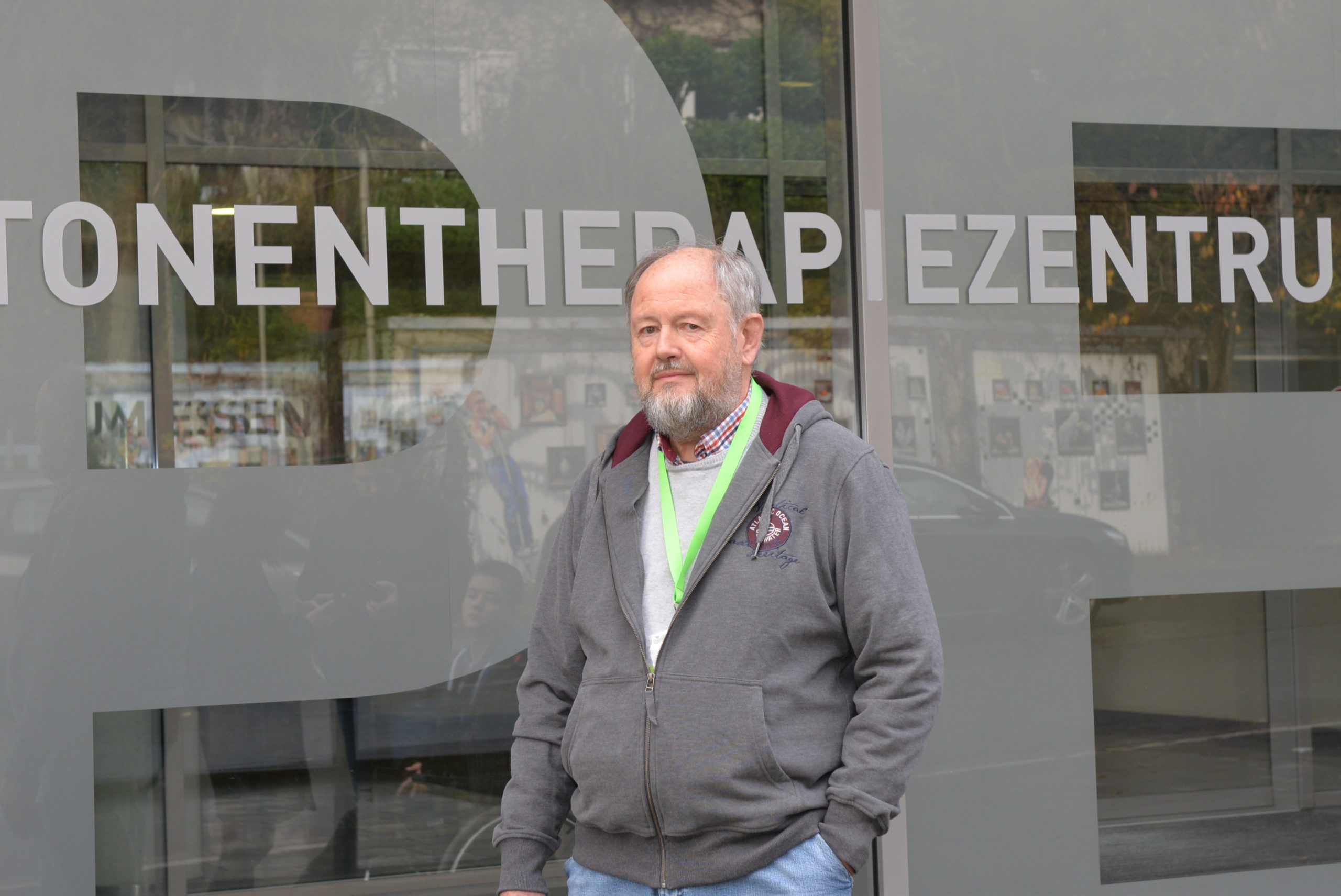
Much more than a number: WPE treats the 2000th patient
In December 2019, about six and a half years after the opening of the West German Proton Therapy Center, the WPE treated its 2,000th patient: The 71-year-old Franz Ott from Bavaria is suffering from prostate carcinoma and received 20 radiations over four weeks. “The treatment of more than 2,000 patients reflects that we have been able to establish Proton Beam Therapy as a standard procedure – an enormous success of which we are very proud”, says Prof. Dr. Beate Timmermann, Director of the Clinic for Particle Therapy at the WPE. The West German Proton Therapy Center is Germany’s largest proton therapy facility at a university hospital and treats patients from all over Germany, Europe and beyond.
The former secondary school teacher Franz Ott has not regretted to choose proton radiation as a therapy and Essen as the treatment location: “I was very kindly welcomed. I had a case manager as my permanent contact person who gave me great support. And from the radiation I received, I felt no side effects.” Ott’s treatment was part of a therapy study that the WPE is conducting together with the Urology Department of the University Hospital Essen.
Six and a half years – WPE in figures
More than 2,000 patients from 39 countries have been treated at the WPE over the past six and a half years. This also stands for more than 60,000 irradiations, 18,000 sedations, the review of at least 10,000 patient records, 5,000 treatment plans, 2,600 brass apertures with a total weight of 21,000 kilograms and 220 meters of Plexiglas for plastic compensators with a total weight of 7,700 kilograms. And last but not least: 1.457 trillion protons were also produced – in 2018 alone, however. In addition, according to WPE Administrative Director Liane Ohlms, “countless telephone calls were made with patients, relatives, referring physicians, health insurance companies or colleagues, countless data were documented, documents were scanned, accommodation and taxi rides were organised”. And the team has grown from a few specialists to just under 130.
In fact, proton therapy has become increasingly established in the treatment of prostate carcinomas in recent years due to its precision: In contrast to conventional therapy with photons, protons emit the radiation directly into the tumor, thus sparing the surrounding healthy tissue. This is particularly advantageous when tumors require high radiation doses, are particularly deep inside the body or are surrounded by sensitive tissue or organs. “Prostate carcinoma generally requires a high radiation dose, which is usually given over a longer period of time to make it more tolerable,” explains Prof. Timmermann. Therefore, prostate patients are often treated over a period of about eight weeks. Franz Ott’s treatment, however, was completed in half the usual time: “The accuracy of the protons makes it easier to distribute the radiation dose over fewer individual sessions, because the healthy body around the tumor is only exposed to a small amount of radiation and is also less stressed overall by the more intensive sessions”.
More gentle, faster and with little restrictions on the normal daily routine: more than 2,000 patients have now benefited from the advantages of proton therapy at the WPE.
